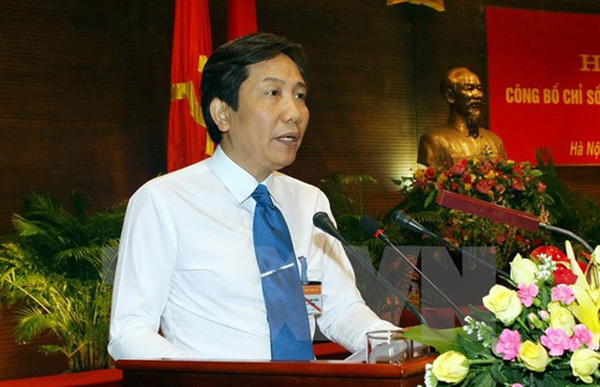Ministry accepts comments on civil servant law
 |
| Deputy Minister of Home Affairs, Tran Anh Tuan. — VNA/VNS Photo |
The ongoing project on administrative unit rearrangement for 2019-21 will leave many officials and public servants redundant. What are the plans for those people?
So far the Ministry of Home Affairs (MoHA) has received rearrangement projects for 42 out of 45 localities. We have reviewed and submitted to the Government 40 projects.
The Government has also submitted 21 projects to the National Assembly Standing Committee for approval. Up to six district-level and 560 commune-level administrative units will be reduced from those 21 localities.
Of the approved projects, Hoa Binh Province and Quang Ninh Province will reduce one district each, while Cao Bang Province and Quang Ngai Province will reduce two districts each. After completing the whole project, some 10,000 officials and another 10,000 staff in the merged districts and communes will be redundant. The MoHA will review the process and have a plan for the next stage.
The rearrangement will likely keep the most capable officials and public servants in any case.
How about some 560 local Party committees’ secretaries and People’s Committees’ chairpersons?
Some of the secretaries, chairpersons and their deputies will be selected to work as officials and staff in other communes. This will be carried out according to specific situations through the policy of downsizing, resignation and transfer to other communes or promoting to positions at the district level.
Current downsizing focuses on retirement earlier than stipulated in the laws and voluntary resignations. How does the MoHA plan to remove the incompetent civil servants?
It is true that the current downsizing is not following the Party Central Committee’s Resolution 39-NQ/TW in 2015 on streamlining and restructuring the contingent of public and civil workers towards downsizing the incompetent.
Localities have just downsized by stopping plans to hire new staff. What they are doing now is not reducing the number of people being recruited not taking incompetent civil servants off the payroll.
I think this rearrangement of district and commune administrative units is an effective solution to force State agencies to evaluate their staff. Those who do not meet civil service requirements need to be dismissed.
Unfortunately, the current process of yearly assessing and classifying civil servants and officials remains an internal process so most civil servants are being assessed as 'completing tasks' at excellent or good levels. None are assessed as 'not completing tasks', except for those who were disciplined.
This rearrangement of administrative units at district and commune levels is an opportunity for us to comply with Resolution 39.
How will severance policies for the redundant officials and civil servants be carried out?
Severance policies will comply with the Government's 2008 Law on Cadres and Civil Servants and 2010 Decree 46/2010/NĐ-CP. Accordingly, the resigning public employee is entitled to a severance allowance, which is calculated based on the time they have contributed to the social insurance fund so they will get half of the current monthly salary for each year of work. The lowest subsidy is equal to one month of the current salary.
In addition, the provinces and cities can base on the budget to report to the provincial people's councils for consideration of additional support.
The MoHA has directed relevant units under the rearrangement process to follow localities and propose specific solutions and plans. They must determine clearly the number of cadres transferred to the district level, streamline the payroll for those retiring earlier than regulated age and create conditions for transfers to other jobs.
About the rest, local governments must create conditions for them to move out of the public sector to work in the private sector. — VNS

Vietnam to raise salaries for civil servants from July 1
The basis salary is the reference for calculating salaries of state employees by multiplying it with their corresponding coefficient.
 Deputy Minister of Home Affairs, Tran Anh Tuan, speaks about the project on administrative unit rearrangement in 45 cities and provinces from 2019-21 that expects to reduce 20 districts and nearly 600 communes nationwide.
Deputy Minister of Home Affairs, Tran Anh Tuan, speaks about the project on administrative unit rearrangement in 45 cities and provinces from 2019-21 that expects to reduce 20 districts and nearly 600 communes nationwide.